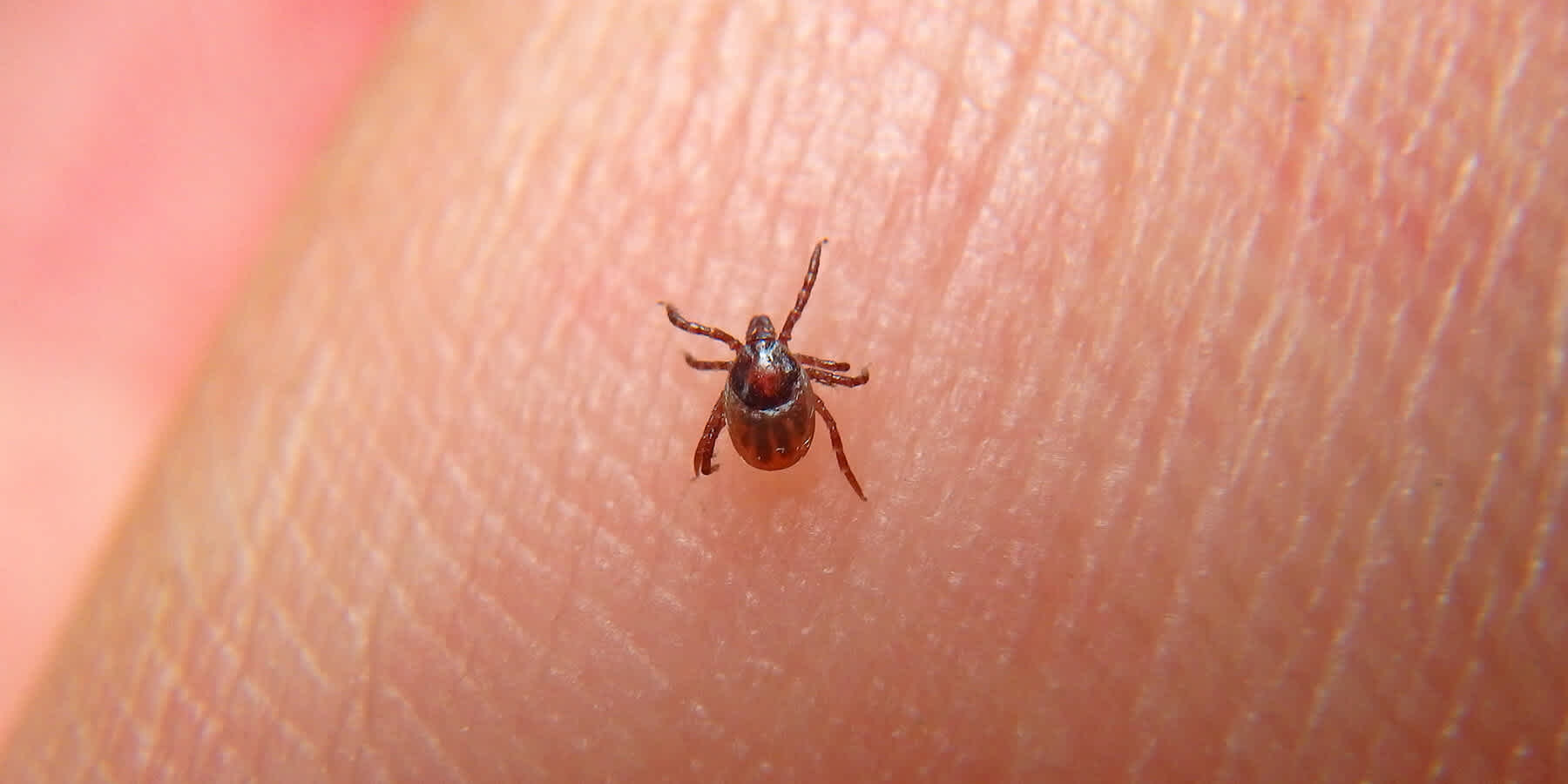
Types of ticks that carry Lyme disease
Medically reviewed by Neka Miller, PhD on August 11, 2020. To give you technically accurate, evidence-based information, content published on the Everlywell blog is reviewed by credentialed professionals with expertise in medical and bioscience fields.
Around the world, there are hundreds of tick species—but what ticks carry Lyme disease? Let’s take a closer look at the specific types of ticks that carry Lyme disease, where and when they’re found, how you can help prevent tick bites, and how to test for Lyme disease from home from home if you are bitten.
Ticks that carry Lyme disease bacteria
The Ixodes tick, also known as the blacklegged tick or deer tick, is the species that commonly carries and transmits the Lyme disease bacterium. In the eastern and midwestern states of the U.S. during the spring, summer, and fall, the main type of tick that carries the bacterium is Ixodes scapularis or deer tick. In the western U.S., Ixodes pacificus—the western blacklegged tick—primarily carries Lyme disease bacteria. Your chances of Lyme disease after a tick bite partially depends on the type of tick that bit you and what life cycle stage it's in.
Life cycle of a tick
It’s typical for ticks to live for two to three years. They have a four-stage life cycle—which includes egg, larva, nymph, and adult. When considering what ticks carry Lyme disease, it’s also a good idea to familiarize yourself with the tick life cycle to better understand when transmission of Lyme bacteria is most likely.
Tick larvae
Tick larvae are so small, it’s nearly impossible to find on your body or clothes. Ticks in this stage have not been shown to transmit tick-borne illnesses.
Tick nymph
Ticks in the nymph stage are the most active in late spring and summer and are the main cause of Lyme disease infections. They’re roughly the size of a poppy seed and because they’re so small (and their bite is painless), they’re often not detected.
Adult tick
An adult tick has a flat shape and is about the size of a sesame seed. Because of their small size, they can be tough to find. Most adult ticks who carry Lyme disease will feed on animals like deers, dogs, horses, and other domestic animals.
Tick season
Ticks that carry Lyme disease are active year-round. However, their peak season of activity is from April to September, though they can survive in below-freezing temperatures, as well. During peak time, the tick nymph actively seeks a host and its bite is associated with the greatest risk of Lyme bacteria transmission.
Where these ticks are found
Lyme disease ticks can be found in leaf litter, woodpiles, stone walls, tall grass, beach grass, bushy areas, areas planted with ground covers, and lawn edges that meet forests, woodlots, and gardens. Essentially, Lyme disease ticks can be found anywhere their hosts live, though they tend to prefer moist and shady areas. The deer tick is infected by vertebrate animals like white-footed mice, chipmunks, shrews, ground-feeding birds, and other small mammals that have Lyme disease bacteria themselves.
Preventing tick bites and Lyme disease
There are several easy ways to protect yourself from an encounter with Lyme-transmitting ticks:
- Steer clear of areas that are known to have an infestation of ticks—like tall grasses and leaf piles.
- If hiking in the outdoors, stay in the center of the trail.
- Wear protective clothing, like long-sleeve shirts, pants tucked into your socks, and appropriate shoes.
- Remove and inspect your clothing before and after moving through a high-risk area and examine yourself for ticks.
What to do if you’ve been bitten by a tick
Have you been bitten by a tick? Initially, a small red bump may appear at the site of the bite. This may go away in a few days and doesn’t necessarily indicate Lyme disease.
Signs and symptoms of Lyme disease can vary, and they often appear in stages. Here’s what to look for after a bite.
Rash
An expanding red area with a bulls-eye pattern. This rash, known as erythema migrans, isn’t typically itchy though it can be warm to the touch. Over the course of a few days, the rash typically expands and can get as large as 12 inches across. Although erythema migrans is one of the most notable symptoms of Lyme disease, it doesn’t happen to everyone who is infected.
Other symptoms
Other symptoms of this tick-borne disease may include fever, chills, fatigue, body aches, headache, neck stiffness, and swollen lymph nodes. Some people with an untreated infection develop heart problems (like an irregular heartbeat), eye inflammation, and liver inflammation (hepatitis). In serious cases, untreated Lyme disease can also lead to joint pain and neurological problems.
To check for Lyme disease from the comfort of your home, take the Everlywell at-home Lyme Disease Test.
Related content
Can you get Lyme disease twice?
What are the chances of Lyme disease after a tick bite?
References
1. Lyme disease. Mayo Clinic. URL. Accessed August 11, 2020.
2. How ticks spread disease. Centers for Disease Control and Prevention. URL. Accessed August 11, 2020.
3. Avoiding Ticks. Centers for Disease Control and Prevention. URL. Accessed August 11, 2020.